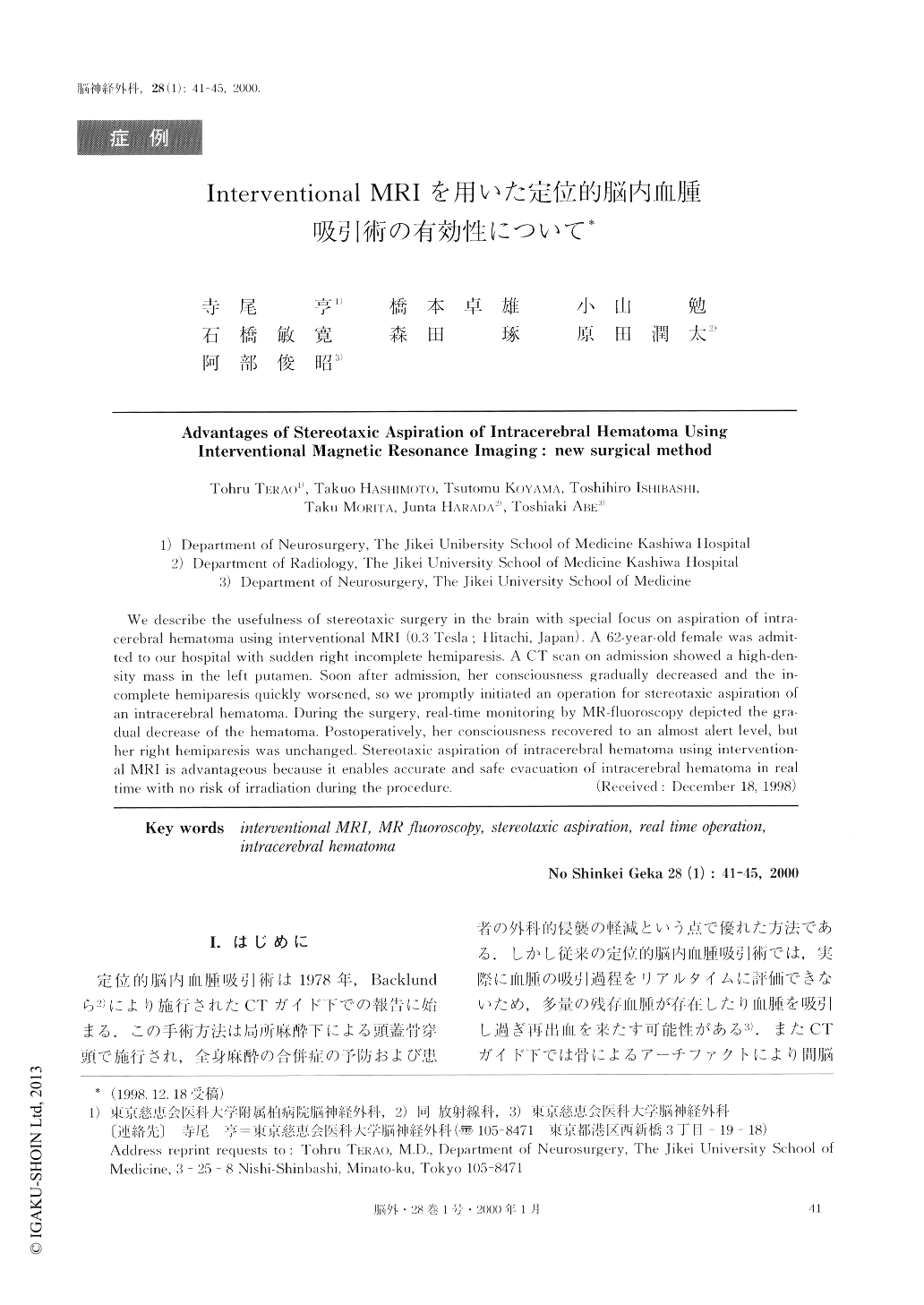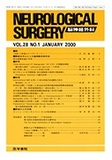Japanese
English
- 有料閲覧
- Abstract 文献概要
- 1ページ目 Look Inside
I.はじめに
定位的脳内血腫吸引術は1978年,Backlundら2)により施行されたCTガイド下での報告に始まる.この手術方法は局所麻酔下による頭蓋骨穿頭で施行され,全身麻酔の合併症の予防および患者の外科的侵襲の軽減という点で優れた方法である.しかし従来の定位的脳内血腫吸引術では,実際に血腫の吸引過程をリアルタイムに評価できないため,多量の残存血腫が存在したり血腫を吸引し過ぎ再出血を来たす.可能性がある3).またCTガイド下では骨によるアーチファクトにより間脳下垂体部や脳幹部を含む後頭蓋窩領域などは明瞭な画像を獲得されず,また術者,患者ともに放射線被爆を受けねばならない.今回,われわれはこれらの欠点を改良するためinterventional MRI(以下,I-MRIと略)を用い定値的脳内血腫吸引術を考案した.この手術方法は,MR-fluoroscopy(以下,MR-Fと略)を利用することでほぼリアルタイムに血腫の吸引過程をモニターで観察することを可能とした.よって手術を安全かつ確実に施行でき,術中の残存血腫に対し容易にtrajectoryを変更することで広範囲での血腫の吸引を可能としたため,その手術方法を中心に報告する.
We describe the usefulness of stereotaxic surgery in the brain with special focus on aspiration of intra-cerebral hematoma using interventional MRI (0.3 Tesla ; Hitachi, Japan). A 62-year-old female was admit-ted to our hospital with sudden right incomplete hemiparesis. A CT scan on admission showed a high-den-sity mass in the left putamen. Soon after admission, her consciousness gradually decreased and the in-complete hemiparesis quickly worsened, so we promptly initiated an operation for stereotaxic aspiration ofan intracerebral hematoma. During the surgery, real-time monitoring by MR-fluoroscopy depicted the gra-dual decrease of the hematoma. Postoperatively, her consciousness recovered to an almost alert level, buther right hemiparesis was unchanged. Stereotaxic aspiration of intracerebral hematoma using intervention-al MRI is advantageous because it enables accurate and safe evacuation of intracerebral hematoma in realtime with no risk of irradiation during the procedure.

Copyright © 2000, Igaku-Shoin Ltd. All rights reserved.


